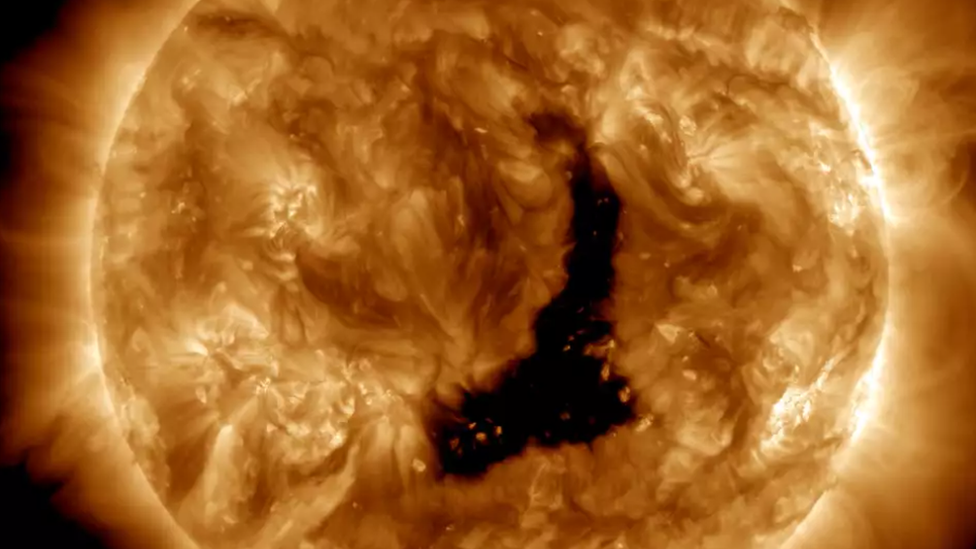Giant 'hole' bigger than 60 Earths has appeared in the Sun
- Published
- comments

The coronal hole is believed to be the size of 60 Earths
A giant hole about the size of 60 Earths has opened up in the Sun's atmosphere, scientists say.
The dark area is known as a coronal hole and can be found on the outermost region of the Sun's surface which is known as the corona.
It was captured by Nasa's Solar Dynamics Observatory (SDO) between 2 and 4 December.
Coronal holes - which despite the name aren't actually holes in the Sun's surface - are cooler areas of the giant star which appear darker in ultraviolet and X-ray images compared to the brighter surrounding regions which are hotter and more dense.
How are coronal holes created?
Artist's impression of how the Solar Orbiter might look flying close to the Sun
The Sun is essentially like a giant magnet.
It's made of something called plasma, which is a gas that is so hot that the atoms are split into positively charged ions and negatively charged electrons which are able to move around separately from one another.
When these particles move about really quickly, they create magnetic fields which become entangled with one another and flow back into the Sun.
However, coronal holes are areas in the huge star where the magnetic fields don't go back into the Sun.
Instead, the magnetic field in these regions flow out from the Sun's atmosphere and into space and it means they are lower in temperature and in density.
Despite their alarming appearance, coronal holes aren't anything to worry about and can't actually be seen with the naked eye.
The sun is made of something called plasma
Experts believe the most recent one spotted could lead to what's known as a geomagnetic storm, which can led to radio blackouts and auroras, which are natural appearance of colourful light in the sky.
However, this storm hasn't turned out to be as as powerful as scientists thought it would be.
It's not known exactly how long the hole will last for, but experts say they they can stick around for longer than a single rotation of the Sun, which is 27 days.
The region where the newly discovered coronal hole exists is expected to rotate away from Earth soon.
- Published27 May 2023
- Published30 October 2022
- Published3 October 2014
